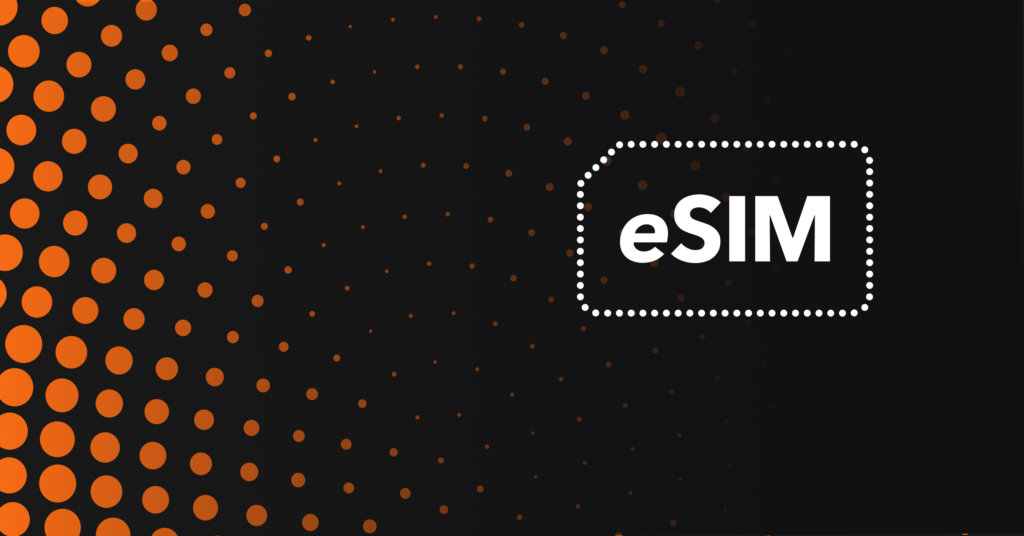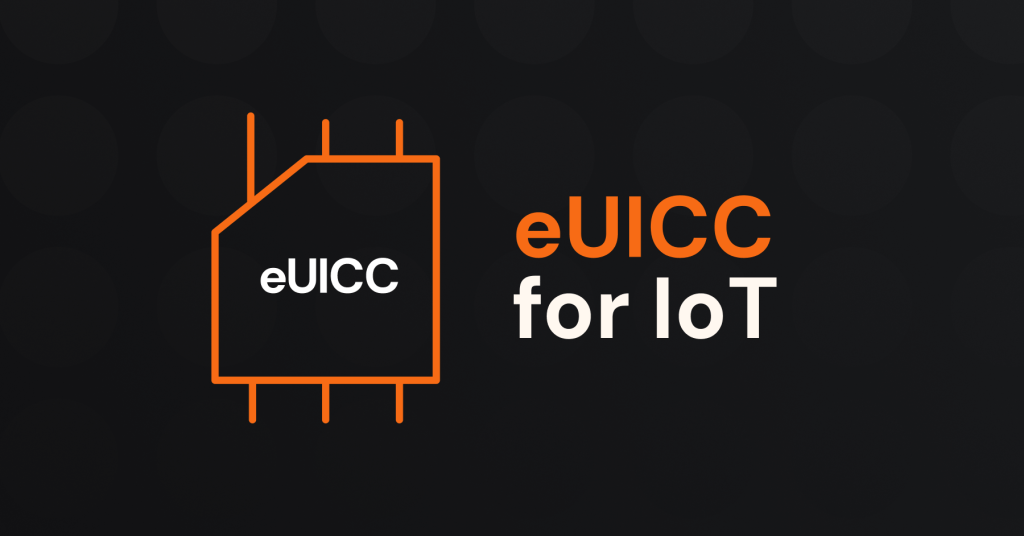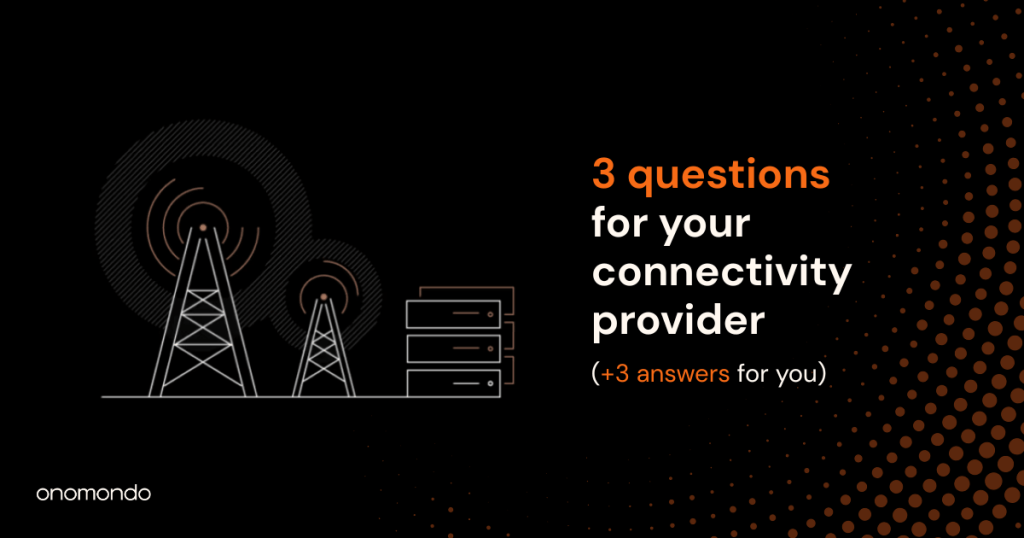The constrained environments where many IoT devices are often deployed pose key challenges in connectivity and logistics that must be addressed for the technology to mature. This is why the latest technical eSIM specifications, the GSMA SGP.32, is transformative for the industry. The GSMA SGP.32 builds on the successes of eSIM, with the aim to streamline the creation and management of IoT devices by adapting to these constraints. However, exactly how will this new eSIM specification impact organizations implementing IoT technology?
In this article, our objective is to guide businesses in choosing the eSIM specification that aligns best with their needs, with a specific focus on the possibilities presented by the latest GSMA SGP.32 eSIM IoT Technical Specifications, also known as the eSIM IoT standard.
Table of Contents
Understanding the eSIM landscape
As of May 2023, the Global System for Mobile Communications Association (GSMA) has released three crucial eSIM technical specifications that shape the current IoT ecosystem:
- GSMA SGP.02: *eUICC for M2M devices (aka eSIM M2M)
- GSMA SGP.22: *eUICC for Consumer devices (aka eSIM Consumer)
- GSMA SGP.32: *eUICC for IoT devices (aka eSIM IoT)
Note that there are separate architecture specifications for eSIM for M2M, Consumer, and IoT devices, which are SGP.01, SGP.21, and SGP.31, respectively.
Each standard is designed with a unique purpose, and discerning their differences is vital when selecting what works best for an IoT project’s SIM cards. Considerations include potential benefits, drawbacks, and the potential for vendor lock-ins that might impact future flexibility.
Generally, all eSIM standards focus on the ability to switch operator profiles on SIMs either remotely or locally on the device. It’s important to note that all eSIM standards or eUICC Remote SIM Provisioning (RSP) must be GSMA certified to function within the GSMA’s eSIM and eUICC ecosystem, resulting in a limited number of vendors in this realm.
? Key terminologies: *eUICC and eSIM
eSIM (embedded SIM) and eUICC (embedded Universal Integrated Circuit Card) are terms that are often used interchangeably because they refer to related components of the same technology, which is the evolution of traditional SIM cards towards a more integrated and flexible solution. Despite their differences, the close relationship between the hardware and the service has led to the terms being used interchangeably in many contexts, including in this guide.
We defaulted to use “eSIM” in reference to the streamlined use of the term by the GSMA and the industry at large, as it is more accessible for most consumers to understand.
Here’s a closer look into the eSIM and eUICC terminologies to learn more about the two.
1. eSIM for M2M Devices (SGP.02)
The initial eSIM standard was released on the 19th of December 2013 which was for M2M devices. Also referred to as the eSIM M2M standard, it introduced the eSIM management platform for the eUICC (Embedded Universal Integrated Circuit Card) known as the eUICC RSP (eUICC Remote SIM Provisioning) to provision and manage SIM profiles and the eUICC itself, which comprises an SM-DP (Subscription Manager-Data Preparation) and an SM-SR (Subscription Manager-Secure Routing).

For a SIM to change its operator profile within the eSIM M2M ecosystem, the eUICC RSP must be technically and commercially integrated with every operator that Company A wishes to retrieve profiles from. This complexity has led to the development of the recently released eSIM IoT standard (more about this below).
It’s key to note that with the eSIM M2M standard, there is a vendor lock-in between the eUICC RSP and the eUICCs, requiring careful selection of the eUICC RSP vendor before ordering the M2M eSIMs from the manufacturer.
→ Did you know that there are different M2M SIMs form factors? Learn more about them here.
2. eSIM for Consumer Devices (SGP.22)
When it was completed in 2017, the Consumer eSIM standard was designed for use cases involving consumers personally interacting with the device. It primarily consists of the eUICC SIM and a Local Provisioning Assistant (LPA) in the device or in the eUICC.

The process of changing the operator profile on a consumer eSIM involves activating the LPA to inform the consumer eSIM. Unlike the M2M eSIM setup, there is no need for technical integration between the Consumer eSIM and operators. Profile changes are typically initiated on the device itself, with the user manually activating the change through a user interface.
While the eSIM Consumer standard is popular for M2M/IoT applications, custom solutions between the LPA and the IoT project owner are often required due to the lack of a standardized platform for remote triggers. The introduction of the eSIM IoT standard aims to address this limitation.
3. eSIM for IoT devices (SGP.32)
The eSIM IoT, the second attempt at designing a solution for M2M/IoT use cases, avoids the need for integration between a platform and individual operators. Also referred to as eSIM IoT, its architecture drew from previous eSIM standards but largely builds on the specifications set on the consumer eSIM.
When the GSMA SGP.32 was released in 2023, a pivotal element to the eSIM IoT was introduced known as the EIM (eUICC IoT Remote Manager). The EIM plays a crucial role in enhancing the suitability of the eSIM IoT for IoT projects. It empowers the seamless initiation of operator profile changes from a remote location — thereby streamlining and optimizing the management of the IoT ecosystem.

It’s important to note the possibility of vendor lock-in between EIM and SIMs, as the standards mention the option for changing configuration between EIM and SIMs. This needs to be agreed upon technically and commercially when acquiring both EIM, IPA, and SIMs.
→ Need to update IoT devices? This guide runs through what you need to consider when updating your fleet.
Should you adopt the GSMA SGP.32 for your business?
The eSIM IoT standard allows companies to remotely trigger operator profile changes on SIMs without the need for technical integration with all supported operators. For large-scale fleet deployments, Onomondo recommends choosing this standard.
Pros of choosing the eSIM IoT standard:
- Operators’ SM-DP+ platforms do not require technical integration onto an organization’s platform.
- Using GSMA standards, organizations can remotely trigger operator profile changes on SIMs.
- Organizations can freely change the vendor of an EIM and IPA in the future while supporting already deployed SIMs on the new vendor’s solution.
Cons of choosing the eSIM IoT standard:
- An IPA (small application code) would need to run on the device or the eUICC, though it is a GSMA standard and not a proprietary solution.
- The standard was just released in May 2023, so it is relatively new in the market, and few vendors are offering it as of June 2023.
→ Free eSIM specs cheat sheet
We prepared this free eSIM cheat sheet for a handy guide to help you navigate between the GSMA technical specifications for eSIMs. It also contains a checklist to help your business prepare for adapting GSMA SGP.32 for IoT deployments.
Choosing between eSIM IoT vs M2M vs Consumer
The future of IoT deployments hinges on strategic decision-making. The eSIM M2M, Consumer, and IoT standards cater to varied needs, each presenting unique challenges and opportunities.
The eSIM M2M standard, while foundational, has faced challenges related to vendor lock-ins and integration complexities. The Consumer eSIM standard caters to consumer-oriented use cases, yet the absence of a standardized platform for remote triggers has led to customized solutions.
The introduction of the eSIM IoT standard with GSMA SGP.32 marks a pivotal step forward, offering the ability to remotely trigger operator profile changes without the need for extensive technical integrations. Onomondo’s recommendation for large-scale deployments underscores the potential benefits of this latest standard, emphasizing flexibility and adherence to GSMA standards.
As technology continues to evolve, the eSIM IoT standard emerges as a promising solution for large-scale IoT deployments. However, the process of selecting an eSIM standard involves careful consideration of project requirements, weighing advantages and drawbacks, and staying informed about the dynamic connectivity landscape.
In the fast-paced world of IoT, the right choice of eSIM specification can unlock the full potential of applications, ensuring seamless connectivity and adaptability in the face of evolving technological landscapes.
Get early access to the eSIM IoT platform
If you want to test SGP.32 for your IoT deployment before the entire ecosystem is released, we welcome you to join the eSIM IoT Alliance. Click the button below to learn about the benefits of being an alliance member.






